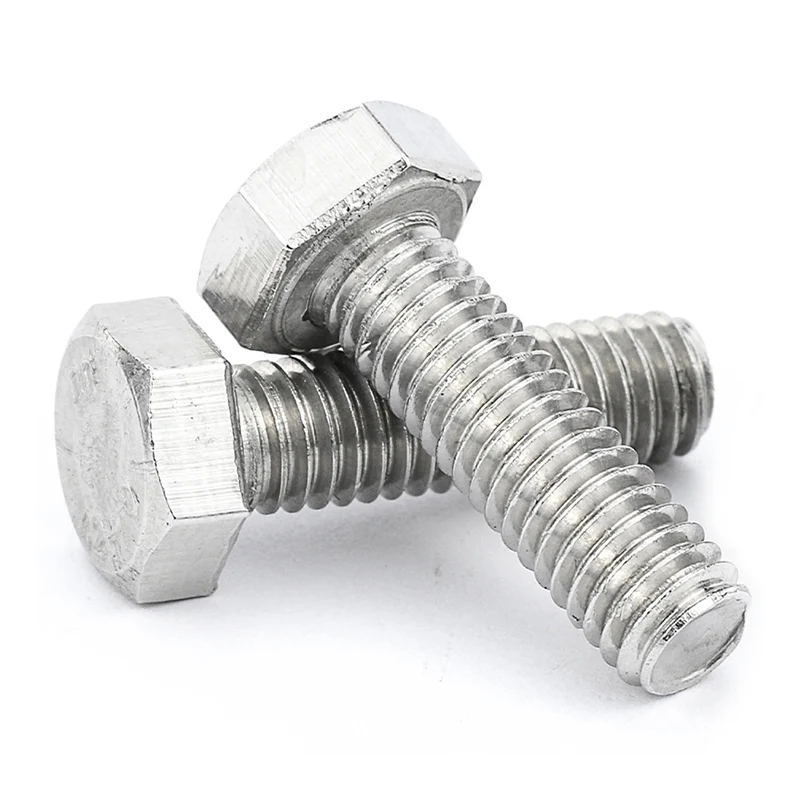Choosing the Right Hexagon Head Bolt for Your Project
2024-08-10
When it comes to selecting the right fasteners for your project, hexagon head bolts often come to mind due to their reliability and versatility. However, with various sizes, materials, and grades available, choosing the right hexagon head bolt can be a bit overwhelming. In this blog, we'll guide you through the key considerations to ensure you select the best hexagon head bolt for your specific application.

1. Understanding Bolt Grades and Strength
One of the most important factors to consider when choosing a hexagon head bolt is its grade. Bolt grades indicate the material's strength and are typically marked on the bolt head. For example:
- Grade 2: Made of low or medium carbon steel, suitable for general-purpose applications with low strength requirements.
- Grade 5: Made of medium carbon steel and quenched and tempered, offering higher tensile strength, making them ideal for automotive and machinery applications.
- Grade 8: Made of medium carbon alloy steel, also quenched and tempered, providing the highest tensile strength and used in heavy machinery and structural applications.
Selecting the right grade ensures that the bolt can handle the load and stress it will encounter in your project.
2. Material Selection
The material of the hexagon head bolt is another critical consideration. Different materials offer varying levels of strength, corrosion resistance, and weight:
- Steel: Commonly used for its strength and affordability, but may require protective coatings to prevent rust.
- Stainless Steel: Offers excellent corrosion resistance, making it ideal for outdoor and marine applications, though it is slightly less strong than carbon steel.
- Brass: Provides good corrosion resistance and electrical conductivity, often used in plumbing and electrical applications.
- Titanium: Lightweight yet strong, suitable for specialized industries like aerospace, but more expensive.
Choosing the right material ensures the bolt will perform well in the specific environment where it will be used.
3. Sizing Your Bolt
Size matters when selecting hexagon head bolts. The diameter and length of the bolt should match the requirements of your project. A bolt that is too long or too short may not provide the necessary clamping force, leading to potential failures. Ensure that the bolt diameter matches the size of the pre-drilled hole and that the length allows for full engagement of the threads.
4. Threading: Coarse vs. Fine
Hexagon head bolts are available with either coarse or fine threading. The choice between the two depends on the application:
- Coarse Threading: Easier to install and more resistant to damage, suitable for general-purpose use and softer materials.
- Fine Threading: Provides a stronger hold and is better suited for applications requiring precise adjustments, such as in machinery assembly.
Consider the material you're working with and the specific needs of your project when selecting the threading type.
5. Environmental Considerations
The environment in which the bolt will be used plays a significant role in selecting the right hexagon head bolt. For outdoor or corrosive environments, opting for stainless steel or galvanized bolts can prevent rust and degradation. If the bolts will be exposed to extreme temperatures, ensure that the material selected can withstand these conditions without compromising its integrity.
Conclusion
Choosing the right hexagon head bolt for your project involves careful consideration of the bolt's grade, material, size, threading, and the environment in which it will be used. By taking these factors into account, you can ensure that your fasteners provide the necessary strength and durability for a successful and long-lasting project. Whether you’re working on a small DIY project or a large industrial installation, selecting the right hexagon head bolt is crucial to achieving the best results.


